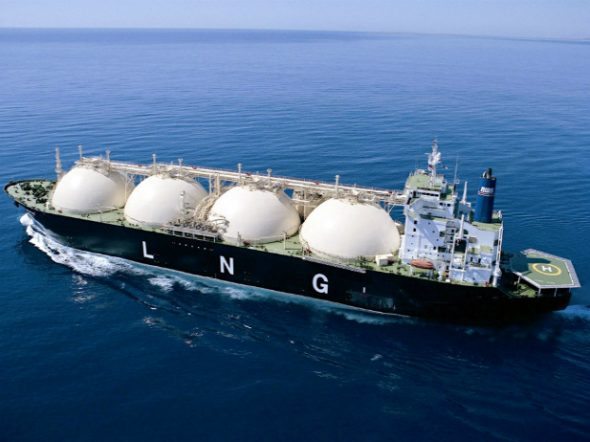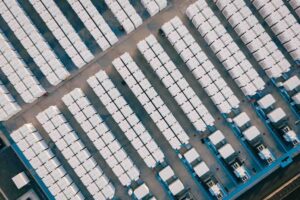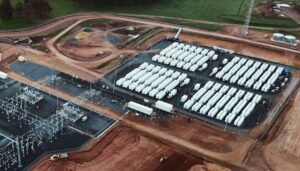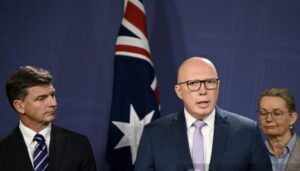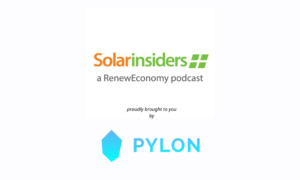The Coalition government on Wednesday released its energy white paper – the document that is supposed to outline the nation’s energy vision for the short and long-term future. But there are no surprises for guessing that is a document that is largely focused on the rear-view mirror.
The energy white paper begins with a false assumption. That “Australia’s large quantities of traditional energy resources provide low-cost, predictable and reliable power for Australia and the world.”
It doesn’t. Coal might be cheap to shovel into a boiler, but it is mighty costly to transport. Grid (delivery) costs make electricity in Australia one of the most expensive in the world. Transport and shipping costs make its coal and gas also expensive, to the point where they are now being undermined by local, renewable alternatives, or a new focus on environmental policy, even in major markets such as India and China.
Like the Abbott government’s discussion paper on emission reduction targets released late last month, this document also works on the principle that the world will do nothing new to address climate change. The energy white paper’s assumptions are based on the International Energy Agency’s “new policies” scenario, which sets the scene for what would be a catastrophic rise in temperatures to an average 4C.
No matter, the Abbott government concludes: “Ongoing access to large volumes of coal and gas will also underpin our energy generation mix for some decades.” Although it does at least acknowledge that these fuels will be “increasingly exposed to competition from renewable energy.”
Not that it intends to accelerate that transition. Quite the opposite. Unlike the actions of the US, China, Europe and other emerging economies, there is no talk of environmental impacts, emissions standards, enhanced renewable energy targets, or climate goals. It is almost entirely focused on the technologies of the past, rather than the future.
When the Green paper was released last August, RenewEconomy did a quick analysis that found that in the 78-page document, gas was mentioned 434 times, coal 100 times, followed by nuclear on 67. Storage got 32 mentions, solar 26, and wind energy just 13 mentions.
The ratio is pretty much the same in the more discursive 81-page white paper, even if the numbers are different. Gas leads still with 173, while coal gets 47 and nuclear 23. Solar gets 19 mentions, battery storage six and wind energy gets just the one mention – in a generic sentence that says Australia has “world class” solar, geothermal and wind resources.
But the energy white paper doesn’t say much – or anything – about how it is going to develop those resources, apart from repeating its opposition to the current renewable energy target of 41,000GWh, and its determination to make it a “20 per cent” target, meaning a cut to around its current negotiating position of 32,000GWh.
The energy white paper also continues its attack on solar. It describes interventions, such as the RET and solar feed-in-tariffs, as market-distorting signals that cause “unintended disruptions” to competitive energy markets.
“Policy interventions in the market framework should not be used to force market outcomes beyond the reliable and competitively priced supply of energy,” it says. “They should allow markets to operate efficiently for competitive outcomes, while providing consumer protection. Interventions, such as the RET and solar feed-in-tariffs, can distort market signals and cause unintended disruptions to competitive energy markets. “
It doesn’t mention what these are, but does spend a bit of time on “cross subsidies” of rooftop solar, and while it does recognise the much higher cross subsidies inherent in the widespread adoption of air conditioning – it proposes to solve this only with “time of use tariffs” – a mechanism derided by some as simply an excuse for utilities to charge higher rates for longer periods, and increase the incentive for consumers to look after their own energy needs.
Indeed, the energy white paper does acknowledge that the development of cost-effective energy storage could bring about a “paradigm change” in the way Australia produces, transports and consumes energy.
The most profound effect, it says, will be in renewable energy, as storage can help overcome current limitations of intermittency in generation. And With Australia’s long, thin electricity grid and large share of remote power generators, Australia could benefit significantly from major advances in storage technologies, as Ergon Energy is already finding.
And the energy white paper notes that as affordable storage develops, it is important that Australia’s existing regulatory framework can accommodate this change. It makes mention of the Future Grid Forum work led by CSIRO – which 18 months ago warned that nearly half of all demand could be sourced by “local or on-site generation” and that unless utilities adapted their business models, one third of customers could choose to leave the grid.
The energy white paper acknowledged that “the growth of disruptive technologies and advances in energy storage (including electric vehicles), combined with greater consumer engagement through demand response and self-generation, could have major implications for electricity markets.
“Networks may need to adapt from the generator-to-customer transport system of the past to acting more as trading platforms between distributed energy users and producers,” it notes.
In other highlights of the energy white paper, the government says
- it will not pursue policies to “pay” for exit of surplus generation capacity. It says “this could unfairly shift costs onto either consumers or taxpayers. “ Fossil fuel generators have been arguing for the payments, saying that owners of coal fired generators would rather “mothball” capacity rather than pay remediation costs – which could amount to $200 million per installation – if they closed.. This has left Australia with vast amounts of surplus capacity, which in turn has been used to argue against new renewable energy.
- It will be keeping an open mind on nuclear energy. Interestingly, it says it recognises the argument that nuclear is a costly alternative to renewables, uses lots of water and has waste disposal issues. But it also says other argue that it is “adequate” affordable and reliable, and has significant environmental benefits and public health advantages over other existing base load technologies. It says it will consider the outcomes of the South Australian Royal Commission, including its use as an energy source.
- The government still believes that carbon capture and storage may be a solution, and wants more funds to be spent. But it seems to be focused more on using Co2 for carbonated drinks, rather than being buried in the ground. That’s a lot of coke.
- It notes electric vehicles are commercially available in Australia and have the potential to be a more mainstream transport option. It notes their advantages in lower running costs, environmental benefits and their ability to assist with managing demand on the electricity system if consumers are provided with an incentive to charge outside of peak energy use times. “Charging electric vehicles at off-peak times improves the utilisation of electricity infrastructure by increasing demand on the electricity grid at these times. Batteries in electric vehicles could also be used as a storage device to meet household demand or demand on the electricity grid through feeding back to the grid at peak times.”

